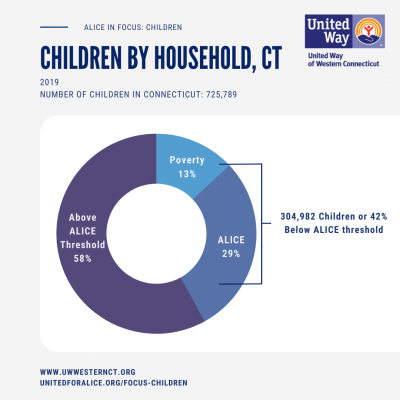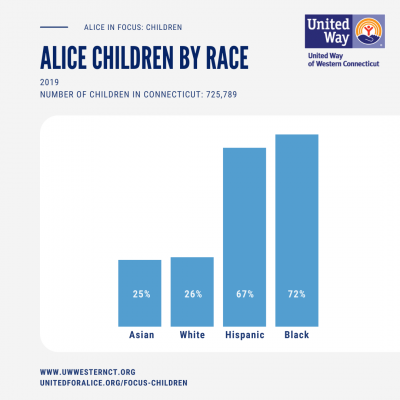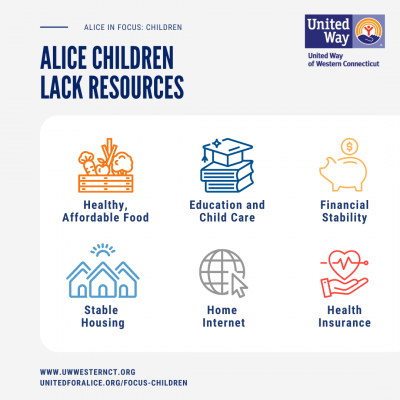
No child should grow up without access to the resources and opportunity to meet their potential.
New ALICE in Focus: Children research launched today reveals that 304,982 Connecticut children—42%—live in financially insecure households. And this is pre-pandemic, making it likely that today’s numbers are even higher. These families often face difficult trade-offs that can affect a child’s health, education, and future well-being.

This new research shows that growing up in financial hardship isn’t limited to the 13% of Connecticut’s children whose families earn at or below the federal poverty level. Another 29% live in struggling ALICE households. ALICE® (Asset Limited, Income Constrained, Employed) families earn above the federal poverty level and therefore do not qualify for assistance programs, but earn too little to afford the basics – housing, child care, transportation, and food.

For our state’s Black and Hispanic children, the stakes are even higher — 72% and 67% respectively are living in households that cannot afford the basics.

Children in ALICE households lack access to significant resources. ALICE families are more likely to lack stable housing, quality child care and early education, healthy food access, private health insurance, home internet access, and more.
The pandemic created a greater divide, deepening vulnerabilities for children, especially among Black and Hispanic households. Analysis of the U.S. Census Bureau’s Household Pulse Surveys from July - October 2021 reveals that families living below the ALICE Threshold were disproportionately impacted by the pandemic and the economic crisis that emerged as a result. Things like the loss of employment and child care, combined with food insufficiency, and interrupted learning due to technology barriers, ensured that ALICE children had a heavier load to bear both physically and emotionally. When basic needs are at risk, there are short- and long-term consequences for ALICE children.
At United Way of Western Connecticut, our programs, partnerships, and grant making, focus on ensuring equitable solutions to issues of health, education, and financial stability for those living below the ALICE Threshold. We have made great strides, but there is more work to be done. To view interactive online dashboards click here and to read the report on Connecticut’s children, click here. We look forward to sharing this data with you and continuing to shine a spotlight on ALICE children and families throughout Connecticut.
PS. Please help us spread the word on social media about #ALICECHILDREN and how this new data can help to drive lasting, positive change.
